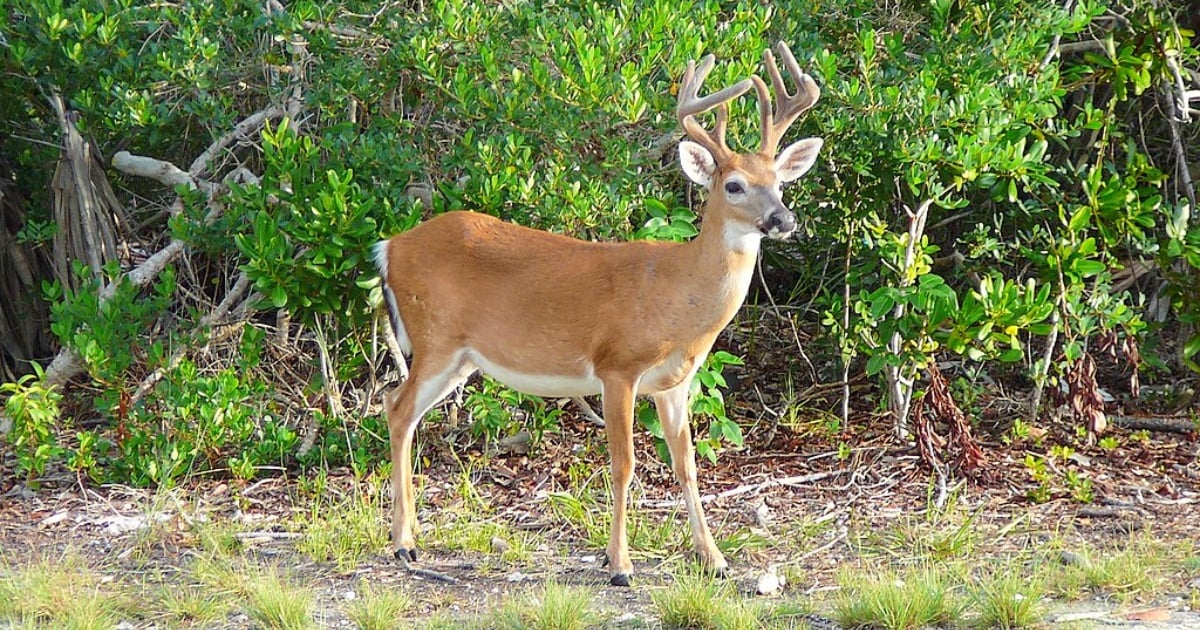The unique Florida Key deer, the smallest subspecies of the white-tailed deer, are teetering on the brink of extinction. Inhabiting the lush wetlands of the Florida Keys, bordered by the Atlantic Ocean and the Gulf of Mexico, these deer have faced numerous threats over the years, from poaching to vehicle collisions on the bustling U.S. Route 1. Yet, their most formidable challenge today is the climate change crisis, particularly the rising sea levels, which threatens their habitat and survival.
In past decades, the Key deer population plummeted to a mere 50 due to hunting and road accidents, marking a critical juncture for the species. Thanks to dedicated conservation efforts, their numbers rebounded to approximately 1,000 by 2010. However, a deadly parasite and the devastating impact of Hurricane Irma once again reduced their numbers significantly.
Effects of Rising Seas and Human Expansion
Currently, the situation is dire as the rising sea levels are altering the landscape of Big Pine Key and over 20 other islands that these deer call home, as reported by the Associated Press. This transformation, coupled with saltwater intrusion, depletes freshwater sources and affects the vegetation crucial for the deer's diet.
The National Oceanic and Atmospheric Administration (NOAA) forecasts that by 2100, sea levels in parts of the Keys could rise by up to two meters, endangering the deer's habitat. Big Pine Key, where the majority of the deer reside and with a maximum elevation of 2.4 meters, is especially susceptible.
Since the 1970s, urban development has significantly reduced natural areas, intensifying the competition for freshwater and food between deer and human residents. Urban sprawl has pushed deer into neighborhoods, where they scavenge in gardens and drink from water buckets provided by locals. While these actions demonstrate community empathy, they also pose risks by fostering dependency and exposing deer to road accidents.
Adapting Amid Uncertainty
The Key deer have adapted to coexist with humans, navigating both wild spaces and neighborhoods. Nevertheless, ongoing habitat loss and the ramifications of climate change, including more severe hurricanes and the death of native pines from saltwater intrusion, exacerbate their plight.
Experts warn that the future of the species is uncertain. By 2030, it is predicted that a 15 cm rise in sea level could eliminate 16% of freshwater sources on Big Pine Key. By 2050, projections suggest that over 84% of the deer's preferred habitat could be submerged.
Conservation Dilemmas and Ethical Choices
Faced with such challenges, wildlife advocates and scientists are considering difficult options. Relocating the deer to other areas or zoos could preserve the species but risks interbreeding with other subspecies and losing their unique genetic traits. Keeping them in zoos is seen as an extreme, less-than-ideal option for wild animals.
Chris Bergh from The Nature Conservancy underscores the urgency of finding solutions that allow Key deer to remain in their natural habitat as long as possible. However, he acknowledges that if natural conditions become untenable, zoos might be the last resort, though he emphasizes that “it is a terrible alternative” for an animal meant to roam free.
The plight of the Florida Key deer serves as a stark reminder of the importance of mitigating climate change and safeguarding natural habitats. The fate of this distinctive subspecies illustrates a broader challenge for biodiversity and environmental management in Florida.
